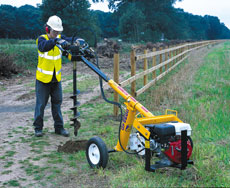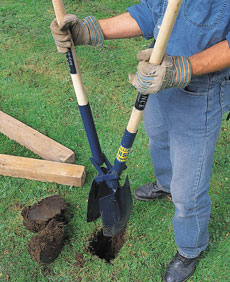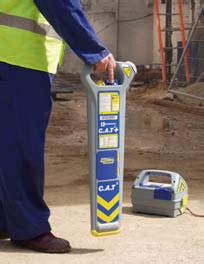-
Tool Hire
Access & Powered Access Breaking & Drilling Building & Siteworks Carpet Cleaners Cleaning & Floorcare Concreting & Preparation Cooling, Heating, Drying Event Fixing Tools Gardening Ladders Lifting & Handling Lighting & Power Painting & Decorating Plumbing & Pumping Powered Access Safety & Ventilation Sanders Sawing & Cutting Skip Hire Surveying & Location Welding Hilti Products
- Find a Branch
- Tips & Advice
- FAQ
- Contact Us
Home How to erect a fence
Fences are the most popular method of defining a garden boundary, and with the task being relatively quick and cheaper to complete when compared with stone or brick alternatives, it is easy to see why. Before you start the process of erecting the fence, make sure you trim any overhanging tree branches or shrubs which will cross the path of your new fence. Use a pruning saw or pruner for this. It is also a good idea to align some string between two pegs to use as a guide for fixing the posts in a straight line. Also, you will want to avoid any underground pipes and power cables which maybe underneath the surface. Use a cable and pipe locator to scan the area before hammering any posts in.
Step 1
If you are choosing to use metal spikes, ensure you push the first post spike into the ground and use a sledge hammer to drive the spike into the ground until the square base is level with the ground surface. Fit the posts into place, making sure the posts are correct distance apart for the panels.
Step 2
To prevent the bottom ends of the fence rotting away, gravel boards should be put in place to support the panels. Lay the boards in position along the bottom of the fence line, resting on the ground. Mark out where each panel crosses a post and cut to desired size. Make use of fence fixing brackets to attach the boards, and ensure you have a spirit level handy to check the boards are sufficiently horizontal.
Step 3
Place the first fence panel parallel with the first post making sure it is resting on the gravel panel. Screw the fixing brackets to the panel and onto the fence using waterproof screws or galvanised nails. Use three to four brackets for each post to strengthen the bond. Continue this technique for the remainder of the panels.
Step 4
Make sure all the post tops are level. You may need to trim some timber from the top of each post. Screw a post cap to each post to protect from the weather.
Step 5
Whichever fencing you choose, it will need a regular coating of preservative prevent rotting. It is advisable to check and re-coat at least every two years. Be careful not to buy panels with large quantities of knots or splits. The lifespan of the panel will be minimal.








